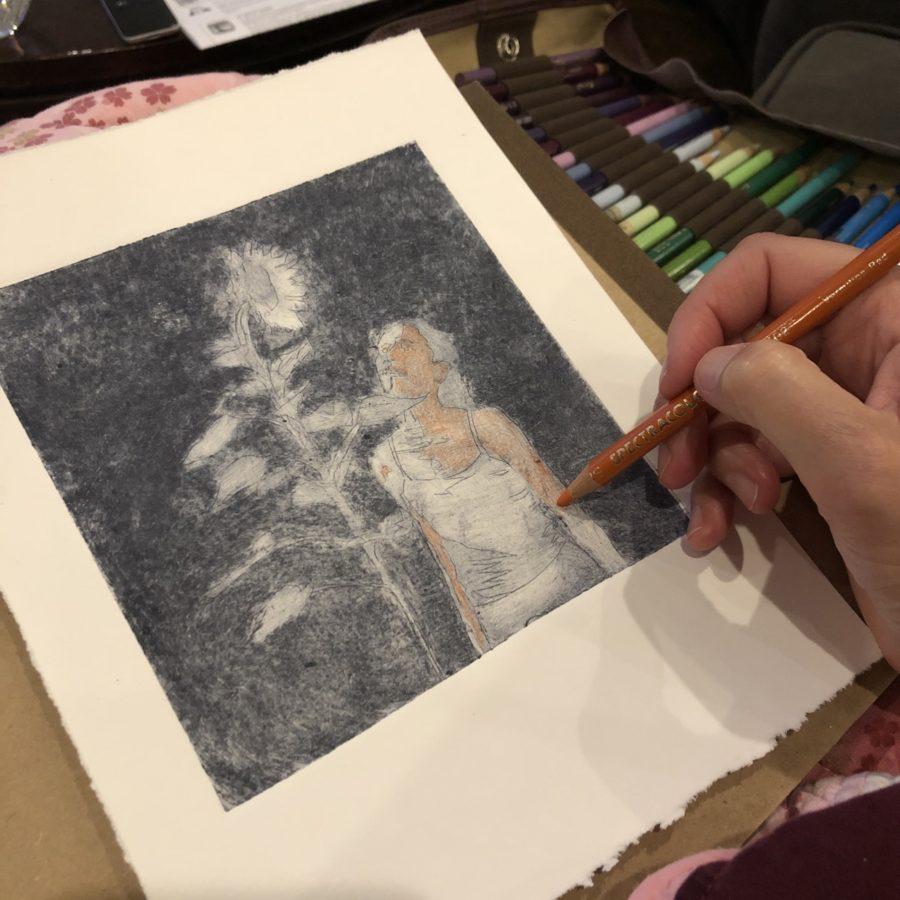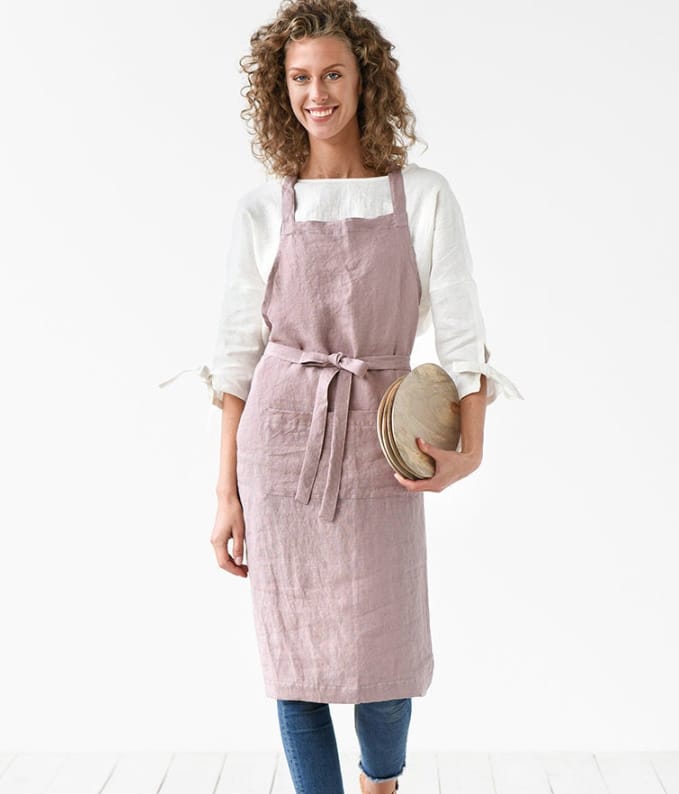Making Art from Stuff at Home
After printing drypoint etchings from recycled plastic food containers (see drypoints from plastic in this series), I’m experimenting with other household materials. In this post, a recycled paper food carton will be used to make a collagraph print. Let’s head into the kitchen!

Printing Collagraphs with What You Have
With lockdowns in place all over the globe due to the pandemic, we have to make art with what we have on hand, right? I used an awl to scribe a figure gazing up at a sunflower, based on a photo my friends Thomas and Maureen gave me permission to use as a reference.
I added printmaking carborundum – which is sand paper grit – around the figure. It’s a great way to add contrast to your prints, since it holds ink, even after wiping the plate.

Make Do
If you don’t have carborundum, you can use corn meal. You can also cut fine-grit sandpaper and adhere it to your plate. It also works to sand the plate where you want some dark areas, and that will rough-up the surface a bit.
Seal the entire plate when you’re finished scribing and texturing. If you’re fresh out of gloss medium and varnish, you can dilute white acrylic paint and seal the entire plate (at least twice) front, back and edges. Shellac or button polish also works well.


Watch the Demonstration Video on Patreon
If you’re a Patreon supporter, head over to my Patreon page to watch the video demo of this fun little experiment. If you’re unfamiliar with Patreon, read the About section over here.
I’ve made a list of supplies below, so you can gather your goodies, and start printing from cereal, pasta, cracker or cookie cartons. Making art from recycled materials is surprisingly rewarding. There’s less pressure to “get it right”, and more permission to let wild hairs spring!

Collagraph Printmaking in the Kitchen (or the Garage)
I hope your creative forays during lockdown have included perusing the drawers in the kitchen and the garage. There are all sorts of culinary and utility tools you can re-consider as art supplies.
Don’t have carborundum? Try finely crushed cornflakes. Don’t have a press? Experiment with a die cutting machine, a bench vice, a rolling pin, or a stomp method of printing. Don’t have collagraph plate material? Try a cereal or pasta box, or a sheet of cardboard.







Put Your Experimenter’s Hat On
I’ve read lots of posts in this Facebook collagraph group from artists who feel afraid to try a new press, or new ink, or a challenging reference image.
Please don’t be afraid of art. We are not suturing a stab wound. We’re making fun things with our hands!
Direct your mind towards enjoying the process. Shrug your shoulders if it turns out a little wonky. You Get To start over if it doesn’t work. Fancy that! And, you take all the particulars you just learned with you to the next experiment.
If you catch yourself starting to feel afraid or hesitant to make something new, tape the mouth of that naysayer, and wrap a super hero cape around your shoulders. Have courage, and make something. (<– Read this if you need a boost.) It’s just art. Carry on.
Thanks for your visit, and I’ll see you in the next post –
Belinda
P.S. If you’re interested in trying Akua’s carborundum gel (I’ve not tried it myself yet), this product PDF is very informative. It looks fun, right?
P.P.S. If you’re interested in seeing other printmakers using recycled materials, look at Karen Wick’s collagraph prints from medicine and juice containers, and Dan Tirels’ monotypes made from oil paint and plastic grocery bags.

Art Quote
I cannot think of myself apart from the influence of the two or three greatest friendships of my life, and any account of my own growth must be that of their stimulating and enlightening influence.
Edith Wharton

Supplies for this Collagraph
- Acrylic Gloss Medium to seal the plate, and adhere any texture elements like carborundum (or cornmeal) 🌽
- Carborundum (available in loose granules, or in a paste from Akua)
- Printmaking paper (in the video, I used Arnhem 1618, and it’s wonderful)
- Pointed tool for creating recessed indentations in the paper that will hold ink; an awl, a sewing needle taped to a pencil, a fine-tipped ball point pen, an engraving needle or twisted scribe, an ice pick, etc.
- Printmaking ink for intaglio prints (I used paynes gray Akua Intaglio ink in the video demonstration)
- Tarlatan or Akua Wiping Fabric
- Crafting Felt to make an ink dauber
- Newsprint (newspapers and old phone books work well)
- Colored Pencils for adding color after the ink dries



Belinda! Hi. I read your whole blog today…I’ve been drawing….isn’t it amazing what this isolation can gift us? Hope you are well. Katie Poole
Hello there, my friend! You’re drawing!?? Tell me more! What are you drawing and with what media? Yayyy for you! We are all well, thanks, and I wish the same for you and yours. XO
Thank you for your wonderful ideas and encouragement!
Hi Corrine – I’m happy to encourage, and I hope it helps spur you towards your art supplies!